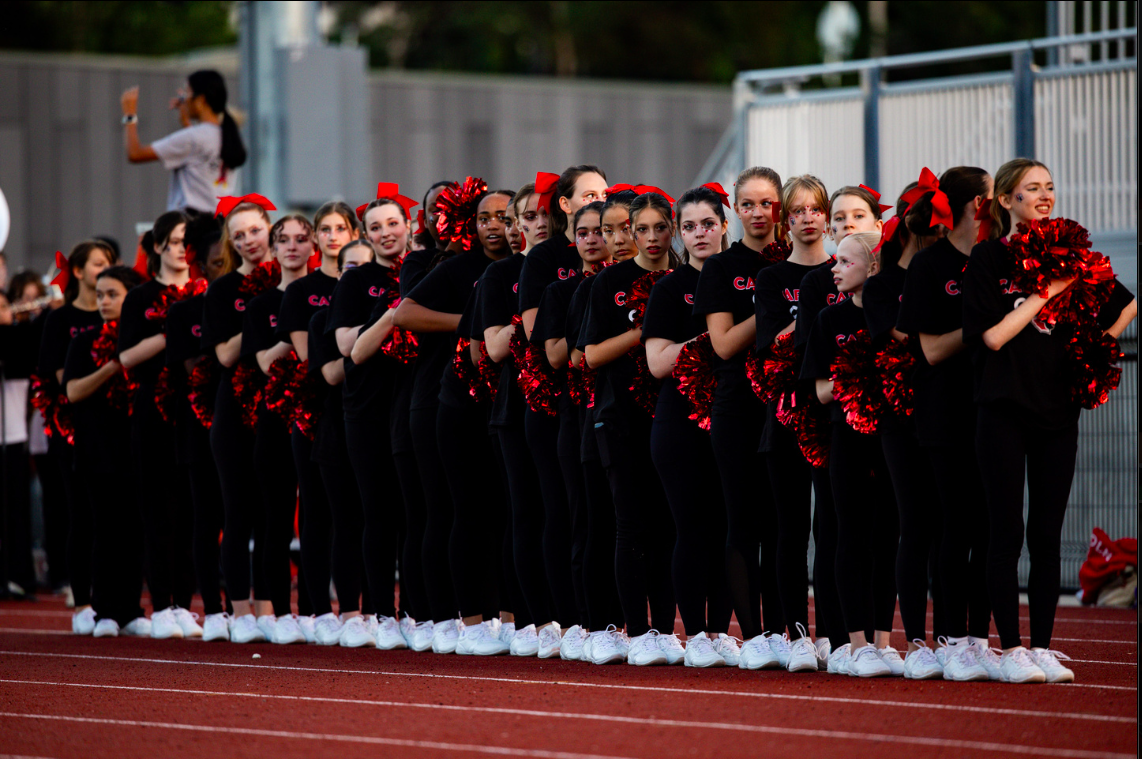“Dune”: Comparing the bestselling book to the new movie
Photo collage sources: Wikimedia Commons and IMDb.com.
December 3, 2021
“Dune”, released on October 22, 2021, (in the US) features some of the 21st century’s most popular actors: Timothée Chalamet, Zendaya, Rebecca Ferguson and Oscar Issac. Written by Frank Herbert in 1965, “Dune” was adapted (the first time) into a movie in 1984 and unsatisfied many viewers, which left high expectations for the 2021 version. The daunting 617 page book can be frustrating, so we’ve done the hard work for you, and have chosen four major differences between the new film and the novel.
In the year 10191, noble houses were sovereign over their respective planets, taking orders from only the Padishah Emperor. The main character, Paul Atreides (Chalamet) is son of Duke Leto (Issac) of House Atreides. The story begins as Duke Leto, Paul and his mother, Lady Jessica (Ferguson), leave their home planet, Caldan, and venture to Arrakis (the source of Spice Melange, a crucial ingredient for intergalactic travel) as ordered by the Emperor. In Arrakis, they are responsible for the production of spice, and will take over House Harkonen’s previous role in doing so. Lady Jessica is a Bene Gesseirt, a powerful group of women who undergo extensive training to gain inhuman powers and use specific genetic breeding in an attempt to produce the Kwisatz Haderach, a man who would hopefully lead the world into a better future. Paul, the first male born from a Bene Gesserit, is thought to be the Kwisatz Haderach, and trained accordingly.
Paul’s Visions
A key tell that Paul may be the Kwisatz Haderach are his visions of the future. In the movie, Paul’s visions appear in brief moments throughout and are filled with vague and foreshadowing sights, possibly alluding to later movies. Paul’s visions in the book (while he is conscious) begin only after his father’s death. Previously, he possessed inklings of the truth, making him aware of when someone was lying and dreamed of things that might become true. In the book Paul’s dreams are different than they are in the movie. In the book, Herbert did not explain his first major vision – and instead placed us inside of Paul’s mind as he tried to make sense of them, leaving the reader with a larger task to decipher.
Details in Book v.s. Movie
The “Dune” book certainly has a lot of details. Not only does the novel have 61 more pages after the final chapter with notes and explanations, and four appendixes, it also has 24 pages of terminology used by Herbert. The new movie, at two hours and 30 minutes, couldn’t encompass the whole first novel, which contains 226 more pages of action and information beyond the film’s end. Although this leaves much anticipation for the next film, some watchers have argued that the first movie felt more like a world-building time waste.
Beyond the difference that the book contains extensive information that the new movie fails to address, the novel provides character narration. Unlike the film, which lacks internal dialogue, the reader is given access to the characters’ thoughts and emotions. Inner monologues of characters is hugely common, and we are able to determine who is good and bad almost immediately. Throughout the movie, we view from the eyes of House Atreides as newcomers on this strange planet Arrakis. Of course, there are large exceptions, like when viewers “sit in” while the House Harkonnen talks, but otherwise, viewers begin to understand the unusual climate along with the characters. In the beginning of “Dune,” there is a traitor among House Atreides who kidnaps the Duke and brings him to the Baron, the villain and head of House Harkonnen whose goal is to defeat the Atreides. The movie reveals the traitor after they betray the Duke. In the book, the traitor is revealed instantaneously because of the third person-perspective. Many of the characters in the novel believe that Lady Jessica, Paul Atreides’ mother, is the real traitor. The truth isn’t revealed to some of them until the very end. Arguably, the inner monologues in the book help the reader understand the plot, as you don’t have to infer what the character’s motives might be.
Languages
Frank Herbert created and wrote with a wide berth of languages for his characters to use. In the movie, visual (subtitles) and auditory (speaking) uses of the languages are prominent, one example being sign language. The film features many moments where Lady Jessica communicates via her hands because she cannot speak without giving herself away. In the book, however, these hand signals are never mentioned, leaving thoughts as to why they were so pronounced in the film.
Nearly 56 years after the release of Frank Herbert’s beloved sci-fi novel “Dune,” Denis Villeneuve has succeeded in creating a beautiful visual adaptation and ode to the book. Old and new fans have been able to bond over the book and film. The timeless story has successfully brought people together and will continue to do so in years to come.





